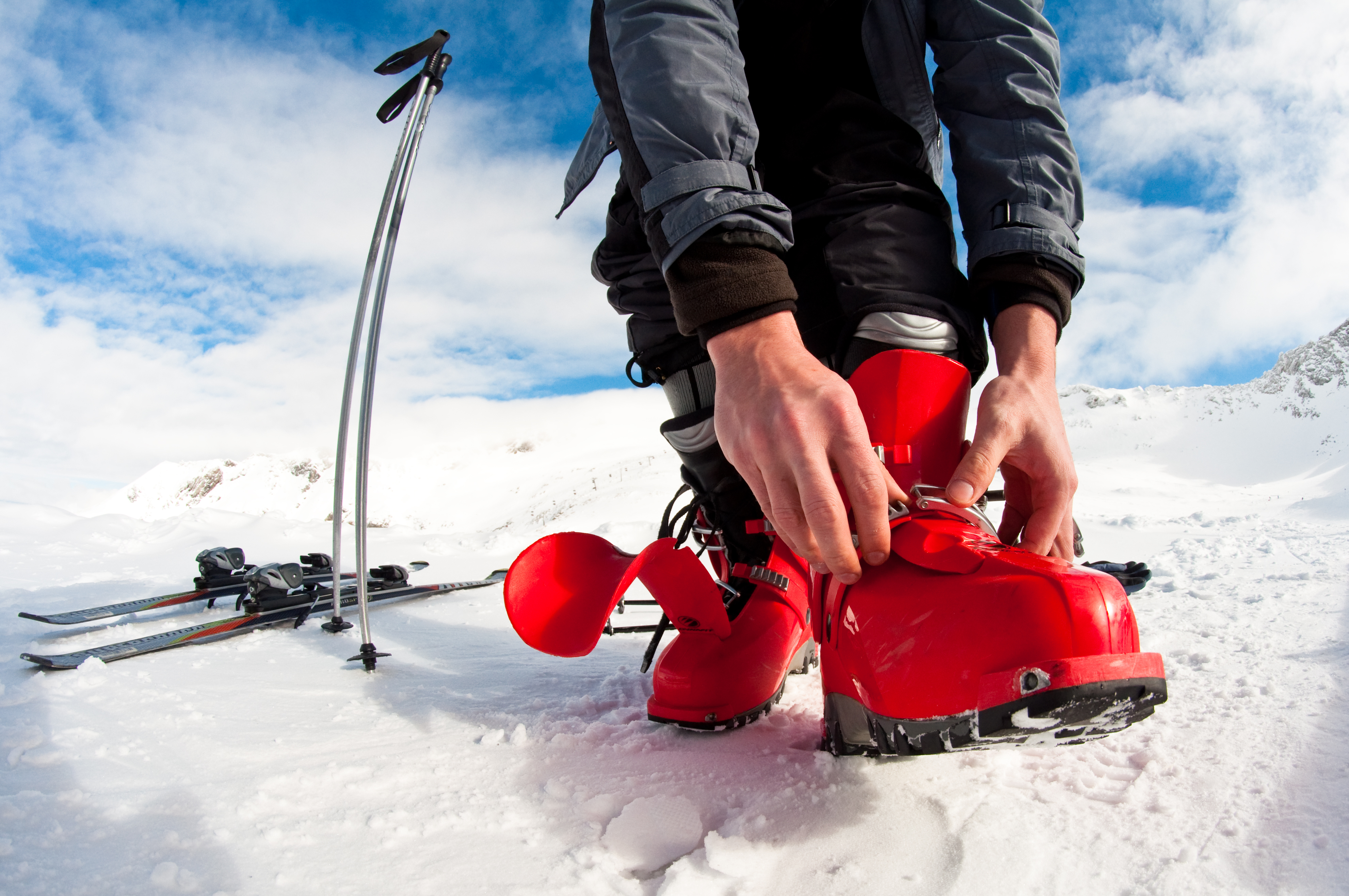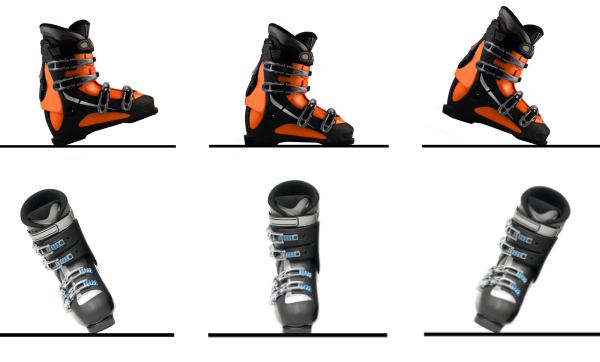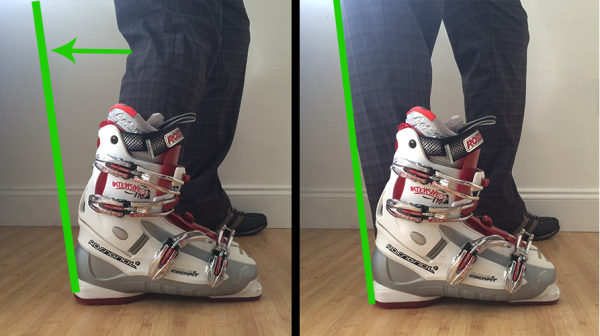Instruction
Improve your swing on the slopes this winter

Winter weather means golfers are moving their clubs aside and picking up skis and snowboards. But springtime will be here before you know it, and there are still things we can work on indoors during the winter months that will help us prepare for next golf season.
If you are familiar with skiing, you know that the boots and binder systems are designed to limit rolling of the feet in both the heel-to-toe and side-to-side directions. They also allow the knees and hips to independently flex to different degrees so the skier can swing their pelvis side-to-side under a more stationary head, which helps the athlete to carve turns and absorb the contours of the slope.
The feet feel locked to the ski so they stay completely flat in all direction, which allows any heel-to-toe or side-to-side weight shift to be transferred directly to the left or right edge of the ski, improving turning and performance. This completely flat position, as well as the skiers’ balance, is created in most part by the flexing knees working in harmony with the motion of the hips of the pelvis. This is evidenced by watching skiers walk clumsily around the lodge with their boots on, since there is no rolling action of the foot in either direction. Walking turns into a robotic movement with each foot being in one of three positions — absolutely flat, on heel, or on toe — with the knees and ball hips driving the motion.
You would never see a skier walking “on edge” like in the front view in the second series of photos below.
In the golf swing I teach, WindandSling.com, we leverage a two-post turning and thrusting system driven by the knees and hips to generate the energy for the golf swing. While the ski boot allows the skier to flex each of their knees and hips independently, it sets them in a position of dorsiflexion, prohibiting the necessary amount of plantarflexion required to maximize the posting system in our golf swing. Note in the photo below on the left how the boot forces the lower leg into a dorsiflexed, forward-leaning angle. The photo on the right shows just how much plantarflexion we need to fully and properly post our right leg in the backswing.
The ski boot allows us to feel the correct, absolutely flat position of our right foot at the top of the backswing, as well as how much plantarflexion is required to completely post to the right side. This platformed position of the right foot and fully posted right leg then releases into the “on toe” position as the right knee hinges and drives in and under to begin the downswing.
- LIKE0
- LEGIT0
- WOW0
- LOL0
- IDHT0
- FLOP0
- OB0
- SHANK1
Instruction
Clement: Laid-off or perfect fade? Across-the-line or perfect draw?

Some call the image on the left laid off, but if you are hitting a fade, this could be a perfect backswing for it! Same for across the line for a draw! Stop racking your brain with perceived mistakes and simply match backswing to shot shape!
- LIKE0
- LEGIT0
- WOW0
- LOL0
- IDHT0
- FLOP0
- OB0
- SHANK0
Instruction
The Wedge Guy: The easiest-to-learn golf basic

My golf learning began with this simple fact – if you don’t have a fundamentally sound hold on the golf club, it is practically impossible for your body to execute a fundamentally sound golf swing. I’m still a big believer that the golf swing is much easier to execute if you begin with the proper hold on the club.
As you might imagine, I come into contact with hundreds of golfers of all skill levels. And it is very rare to see a good player with a bad hold on the golf club. There are some exceptions, for sure, but they are very few and very far between, and they typically have beat so many balls with their poor grip that they’ve found a way to work around it.
The reality of biophysics is that the body moves only in certain ways – and the particulars of the way you hold the golf club can totally prevent a sound swing motion that allows the club to release properly through the impact zone. The wonderful thing is that anyone can learn how to put a fundamentally sound hold on the golf club, and you can practice it anywhere your hands are not otherwise engaged, like watching TV or just sitting and relaxing.
Whether you prefer an overlap, interlock or full-finger (not baseball!) grip on the club, the same fundamentals apply. Here are the major grip faults I see most often, in the order of the frequency:
Mis-aligned hands
By this I mean that the palms of the two hands are not parallel to each other. Too many golfers have a weak left hand and strong right, or vice versa. The easiest way to learn how to hold the club with your palms aligned properly is to grip a plain wooden ruler or yardstick. It forces the hands to align properly and shows you how that feels. If you grip and re-grip a yardstick several times, then grip a club, you’ll see that the learning curve is almost immediate.
The position of the grip in the upper/left hand
I also observe many golfers who have the butt of the grip too far into the heel pad of the upper hand (the left hand for right-handed players). It’s amazing how much easier it is to release the club through the ball if even 1/4-1/2″ of the butt is beyond the left heel pad. Try this yourself to see what I mean. Swing the club freely with just your left hand and notice the difference in its release from when you hold it at the end of the grip, versus gripping down even a half inch.
To help you really understand how this works, go to the range and hit shots with your five-iron gripped down a full inch to make the club the same length as your seven-iron. You will probably see an amazing shot shape difference, and likely not see as much distance loss as you would expect.
Too much lower (right) hand on the club
It seems like almost all golfers of 8-10 handicap or higher have the club too far into the palm of the lower hand, because that feels “good” if you are trying to control the path of the clubhead to the ball. But the golf swing is not an effort to hit at the ball – it is a swing of the club. The proper hold on the club has the grip underneath the pad at the base of the fingers. This will likely feel “weak” to you — like you cannot control the club like that. EXACTLY. You should not be trying to control the club with your lower/master hand.
Gripping too tightly
Nearly all golfers hold the club too tightly, which tenses up the forearms and prevents a proper release of the club through impact. In order for the club to move back and through properly, you must feel that the club is controlled by the last three fingers of the upper hand, and the middle two fingers of the lower hand. If you engage your thumbs and forefingers in “holding” the club, the result will almost always be a grip that is too tight. Try this for yourself. Hold the club in your upper hand only, and squeeze firmly with just the last three fingers, with the forefinger and thumb off the club entirely. You have good control, but your forearms are not tense. Then begin to squeeze down with your thumb and forefinger and observe the tensing of the entire forearm. This is the way we are made, so the key to preventing tenseness in the arms is to hold the club very lightly with the “pinchers” — the thumbs and forefingers.
So, those are what I believe are the four fundamentals of a good grip. Anyone can learn them in their home or office very quickly. There is no easier way to improve your ball striking consistency and add distance than giving more attention to the way you hold the golf club.
More from the Wedge Guy
- The Wedge Guy: Golf mastery begins with your wedge game
- The Wedge Guy: Why golf is 20 times harder than brain surgery
- The Wedge Guy: Musings on the golf ball rollback
- LIKE86
- LEGIT13
- WOW6
- LOL1
- IDHT0
- FLOP4
- OB1
- SHANK8
Instruction
Clement: Stop ripping off your swing with this drill!

Not the dreaded headcover under the armpit drill! As if your body is defective and can’t function by itself! Have you seen how incredible the human machine is with all the incredible feats of agility all kinds of athletes are accomplishing? You think your body is so defective (the good Lord is laughing his head off at you) that it needs a headcover tucked under the armpit so you can swing like T-Rex?
- LIKE0
- LEGIT2
- WOW2
- LOL0
- IDHT0
- FLOP0
- OB0
- SHANK2
-

 19th Hole2 weeks ago
19th Hole2 weeks agoDave Portnoy places monstrous outright bet for the 2024 Masters
-

 19th Hole3 days ago
19th Hole3 days agoJustin Thomas on the equipment choice of Scottie Scheffler that he thinks is ‘weird’
-

 19th Hole2 weeks ago
19th Hole2 weeks agoTiger Woods arrives at 2024 Masters equipped with a putter that may surprise you
-

 19th Hole3 days ago
19th Hole3 days ago‘Absolutely crazy’ – Major champ lays into Patrick Cantlay over his decision on final hole of RBC Heritage
-

 19th Hole3 weeks ago
19th Hole3 weeks agoReport: Tiger Woods has ‘eliminated sex’ in preparation for the 2024 Masters
-

 19th Hole1 week ago
19th Hole1 week agoTwo star names reportedly blanked Jon Rahm all week at the Masters
-

 19th Hole1 week ago
19th Hole1 week agoReport: LIV Golf identifies latest star name they hope to sign to breakaway tour
-

 19th Hole1 week ago
19th Hole1 week agoNeal Shipley presser ends in awkward fashion after reporter claims Tiger handed him note on 8th fairway

















Carlos Danger
Dec 22, 2014 at 10:09 am
Improve your swing this off-season by tearing your ACL and breaking your wrist on a tree while skiing!
marty
Dec 22, 2014 at 2:01 pm
You should change your name to carlos the sissy.
Carlos the sissy
Dec 27, 2014 at 6:27 pm
Better?
MARGIT
Dec 20, 2014 at 3:23 am
Living in Switzerland, I accept the different seasons.
Give me a break, this is getting too muchg and too scientific for a woman I love Sking and I love Golf, there are other things to improve my golfswing rather than wearing the skiboot at home. Looks crazy to me
Tom Duke
Dec 22, 2014 at 9:23 am
Hi Margit..don’t wear those ski boots in the house, they will scuff the floors!..:). Thanks for your comment. This is not so much a drill, as it is to highlight the feeling you want to have with your right foot at the top of your backswing–completely “platformed” and flat on the ground both side to side and heel to toe–very much like your foot feels in your ski boot. My teacher Mike Dunaway used to try and grip the ground with his toes through the bottom of his shoe to emphasize this totally flat feeling. Also, the angle of the ski boot keeps your lower leg leaning forward by design. I instruct around a two post turning and thrusting system (verses a squat and turn) where the back leg posts (straightens) while the front leg hinges, and then reversing these–similar to when we walk. So this is not so much a drill, as it is to point out how the right knee is to draw back to straighthen the right leg in the backswing. In the last photo my foot is obviously not in the boot, but allows me to show how the lower leg needs to angle away from the ball at the top of the backswing, but then drive in and under and angle towards the ball on the through swing. As I mentioned to Jeff, check out Bubba Watson and John Daly–two great posters. Have a great winter season–I miss skiing down here in Florida!
Jeff
Dec 20, 2014 at 12:35 am
At what point of the backswing are we supposed to be in that proper planter flexion position(straight right leg), and how does that marry with the flexed knee feel we’ll get from the boot drill? Seems like the two positions exclude eachother.
Tom Duke
Dec 22, 2014 at 9:05 am
Hi Jeff, thanks for the interest and comment. The “posted” right leg is at the top of the backswing. As the right leg posts, the left knee is flexing. Note the angle break of my left knee in the last photo. At the start of the downswing, the posted right leg hinges and begins to drive in and under much like a field goal kicker as the left leg posts (check out the impact position in my last article on “Lag”)-just like when we walk–the one leg posts while the other hinges and swings forward–with a hip vault and weight shift occurring each cycle. So the two positions don’t exclude each other–they work together. The hinging and driving right knee shortens the right side and levers our spine, shoulder and hip lines which adds to the wrecking ball action of the pelvis. Watch Bubba and John Daly–two great “posters”.
Doug Fresard
Dec 19, 2014 at 1:30 pm
What a fantastic idea-training session for us snow BIRDS!!!
Double Mocha Man
Dec 19, 2014 at 12:40 pm
There’s nothing more wonderful than being at a ski resort and being among the heel and toe walking crowd. Unless it’s being in a golf course parking lot 30 years ago and hearing the clicking of golf spikes on asphalt.